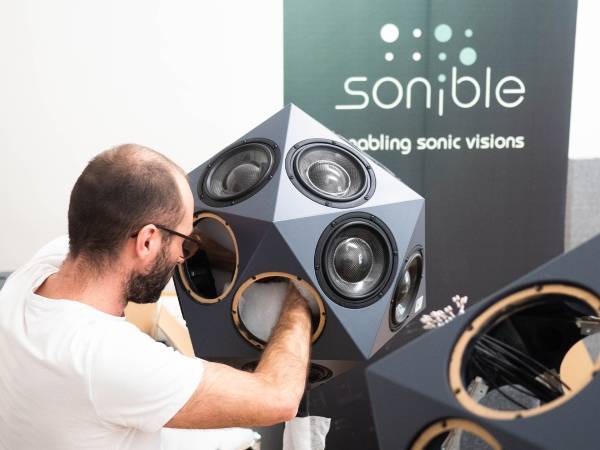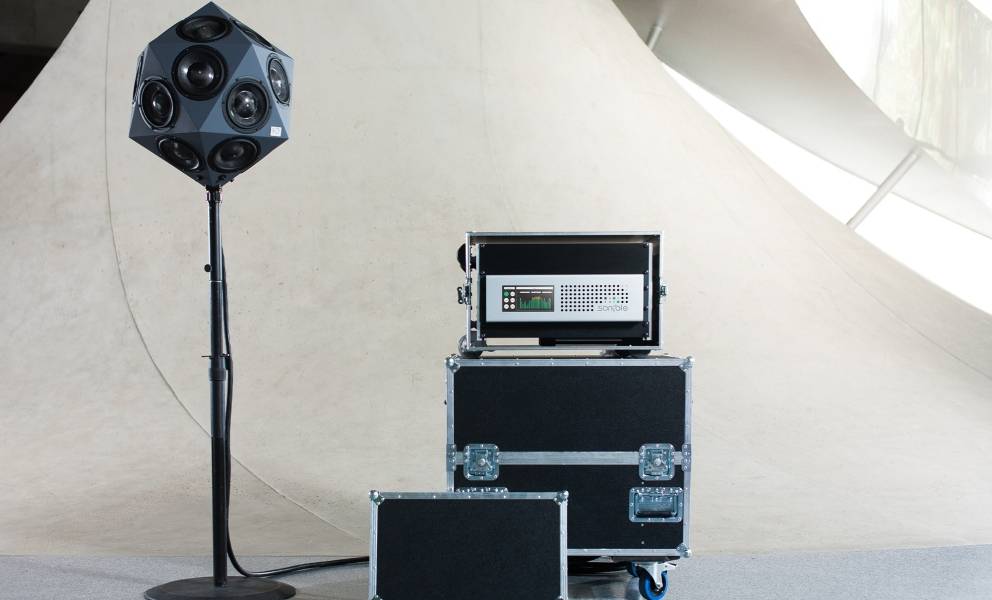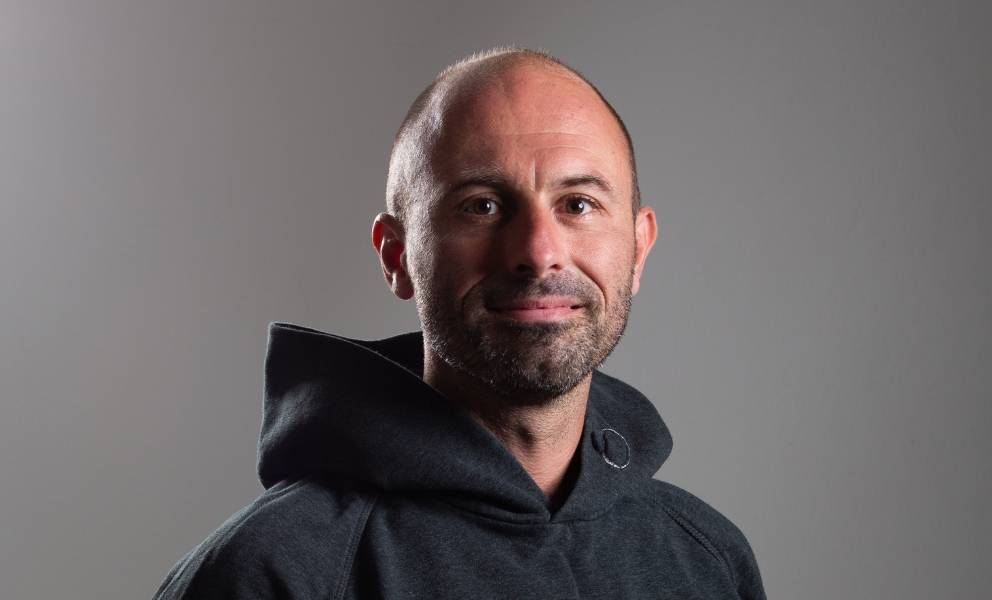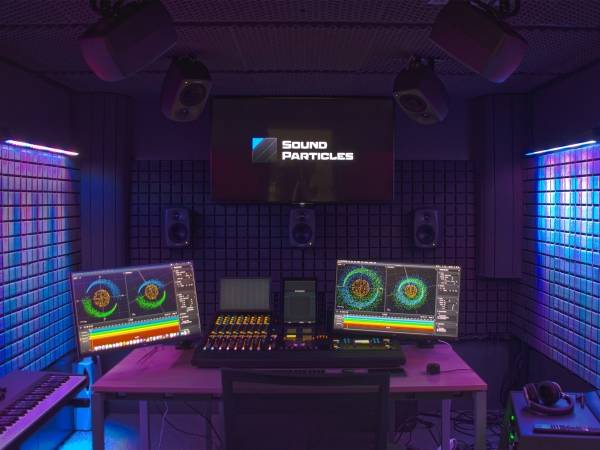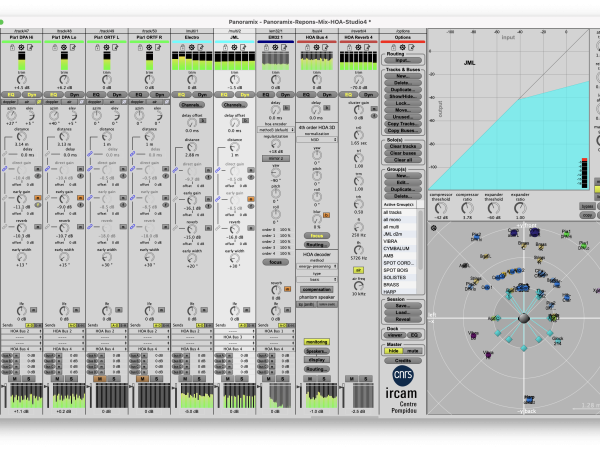3 Minuten
Immersive sound with a single loudspeaker
The name IKO is derived from “icosahedron” (ancient Greek eikosáedros “twentyfold”). From a technical point of view, IKO is a so-called Platonic solid with 20 equal faces, each with an integrated 6” broadband loudspeaker.
The individual control of the loudspeakers and complex algorithms make it possible to send sound beams in any spatial direction. This beamforming is made possible by the Higher Order Ambisonics method. IKO uses wall, floor and ceiling reflections to create a sound space that draws the audience into the media and artistic events. This makes it possible to create immersive sound experiences with a single sound source.
New possibilities for art
But the sophisticated technology is by no means the only thing that makes IKO stand out. Due to its compactness, the system can be used to create immersive sound worlds anywhere. IKO allows you to change the properties of a speaker rather than just reproduce sound. This flexibility inspires sound artists to create new works, especially when their work inextricably combines space and sound.
IKO requires you to explore new possibilities and factors in an artistic context to realize its full potential. Artists and composers such as Gerriet Sharma, Angela McArthur, Steffen Krebber, Nicolas Buzzi, Carlos Casas, and many others are happy to take on these challenges: they use IKO as an instrument, repeatedly composing specific works, creating new spatial-sound contexts and using the acoustic mobility that IKO brings to bear to captivate an international audience in an immersive way.
Considering its genesis, IKO was practically born with this pronounced artistic aspect.
Scientific work as the foundation
Assoc. Prof. Franz Zotter, associate professor and university lecturer in acoustics and audio technology at the Institute for Electronic Music and Acoustics (IEM) at the University of Music and Performing Arts Graz, built the first IKO prototype as part of his dissertation in 2006.
The theoretical side of his dissertation included research into the extent to which the directional characteristics of natural instruments can be reproduced using electroacoustic means, in this case, a compact loudspeaker system. As early as 40 years ago, the directional characteristics of natural instruments were measured and examined in a highly complex manner. With his dissertation, Franz Zotter aimed to take the next step: reproduction. To do this, he used spherical coordinates, spherical harmonics, and associated radial propagation terms – in short, Ambisonics – to mathematically describe the problem.
As it turned out, such a detailed reproduction is only possible to an approximation, since the radiation characteristics of natural instruments are significantly more complex than what we are currently able to reproduce with loudspeaker systems due to physical limitations.
At that time, Ambisonics was just entering the field of music production. The first loudspeaker domes were put into operation and the first compositions were created. What was revolutionary about the idea of the IKO was that it provided a loudspeaker system that is a mobile, quasi-inside-out variant of a loudspeaker dome.
A strong connection and shared enthusiasm
Ralf Baumgartner, Peter Sciri and Alexander Wankhammer, the founders of sonible, and Daniel Hojka, sonible's hardware specialist, met while studying sound engineering at the Graz University of Technology and the Graz University of Art. Their connections within the university structures and their shared enthusiasm for turning new ideas into concrete solutions led to the four of them working intensively with Franz Zotter to bring IKO to market maturity. In addition, sonible launched d:24, a highly signal-faithful multi-channel amplifier, which turned out to be the ideal complement for the IKO loudspeaker system.
The collaboration between the University of Music and sonible continues to this day: sonible is responsible for worldwide marketing, continues to manufacture each IKO by hand, and advises potential and long-time IKO owners and artists on technical matters. As part of the partnership, the Institute for Electronic Music and Acoustics (IEM) measures each IKO individually using laser vibrometry, not only to ensure that each IKO system meets the high-quality requirements, but also to continue to support the ongoing development of the IKO.
IKO is the culmination of more than 10 years of scientific research by Franz Zotter, years of artistic research by Gerriet Sharma and others, and the combined expertise of sonible. Even in the current environment, where developments in ambisonics are happening at a rapid pace, IKO continues to fascinate listeners and sound artists alike.
Ralf Baumgartner
Ralf Baumgartner completed his studies in electrical engineering and audio engineering at the University of Music and Performing Arts Graz in 2011, specializing in acoustics and signal processing. In addition to teaching positions at the Deggendorf Institute of Technology and the University of Music and Performing Arts Graz and various engagements as a lecturer on the subject of sound reinforcement technology, he also worked for many years as a sound and system technician. Together with two fellow students, Ralf Baumgartner founded sonible GmbH in 2013. The company is internationally recognized as a market leader in the development of software with artificial intelligence for audio post-processing, manufactures high-quality audio hardware, and plans complex 3D audio installations.
Article topics
Article translations are machine translated and proofread.
Artikel von Ralf Baumgartner
 Ralf Baumgartner
Ralf Baumgartner 